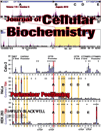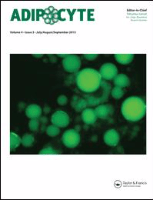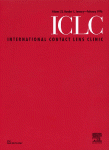
Islets
Scope & Guideline
Catalyzing Research for a Healthier Future
Introduction
Aims and Scopes
- Pancreatic Islet Biology:
Exploration of the cellular and molecular mechanisms underlying pancreatic islet function, including beta-cell physiology, signaling pathways, and cellular interactions. - Diabetes Research:
Investigation into the pathophysiology of diabetes, including studies on insulin secretion, glucose metabolism, and the impact of various factors on beta-cell health. - Translational Studies:
Research that connects laboratory findings with clinical applications, particularly focusing on islet transplantation, regenerative medicine, and the development of new therapies for diabetes. - Innovative Methodologies:
Utilization of advanced technologies and methodologies such as 3D imaging, genetic editing, and high-throughput screening to study pancreatic islets and related conditions. - Stem Cell and Regenerative Medicine:
Studies exploring the potential of stem cells and other regenerative approaches to restore islet function or generate new insulin-producing cells.
Trending and Emerging
- MicroRNA and Gene Regulation:
There is a growing interest in the role of microRNAs and other regulatory RNAs in islet function and diabetes, highlighting their potential as therapeutic targets and biomarkers. - 3D and Advanced Imaging Techniques:
Recent studies have increasingly employed advanced imaging techniques, such as light sheet fluorescence microscopy, to better understand the architecture and microenvironment of pancreatic islets. - Regenerative Therapies and Stem Cells:
Research on regenerative medicine, particularly the use of stem cells for islet regeneration and transplantation, is gaining traction, reflecting the need for innovative therapies for diabetes management. - Impact of External Factors on Islet Function:
There is an emerging trend to explore how environmental factors, such as stress, diet, and infection, influence islet health and function, indicating a broader understanding of diabetes etiology. - Bioinformatics and Computational Modeling:
The integration of bioinformatics and computational approaches in studying islet biology is becoming more prevalent, enabling researchers to analyze complex data and model biological processes effectively.
Declining or Waning
- Historical Perspectives on Islet Research:
While foundational studies and historical insights into islet research were once prevalent, recent publications have moved towards contemporary experimental approaches and clinical applications, suggesting a waning interest in historical context. - Basic Animal Models:
Research relying solely on traditional animal models without translational relevance has decreased, as the field shifts towards more sophisticated models that better mimic human conditions and diseases. - Single-Factor Studies:
The trend of examining the effects of single variables on beta-cell function or islet health is declining, as the complexity of metabolic diseases necessitates multifactorial approaches that consider various interacting factors.
Similar Journals

JOURNAL OF CELLULAR BIOCHEMISTRY
Exploring the Intricacies of Cellular ProcessesJournal of Cellular Biochemistry is a premier academic journal dedicated to advancing the field of biochemistry and cellular biology. Published by Wiley, this influential journal has a significant impact factor that underscores its relevance and authority within the scientific community. With its ISSN 0730-2312 and E-ISSN 1097-4644, the journal has been on the frontier of research since its inception in 1982, and is expected to continue publishing cutting-edge studies through 2024. As evidenced by its ranking in the 2023 Scopus Quartiles, it holds a rank of Q2 in Biochemistry and Q3 in both Cell and Molecular Biology, placing it among the top tiers of scientific journals in these disciplines. The Journal of Cellular Biochemistry serves as a vital resource for researchers, professionals, and students alike, providing a platform for the dissemination of innovative ideas and findings that shape our understanding of cellular processes and biochemical pathways. Though it does not currently offer Open Access options, its robust peer-review process ensures that each publication meets the highest academic standards, thus solidifying its esteemed position in the landscape of biochemical research.

Adipocyte
Advancing the Science of Fat CellsAdipocyte is a distinguished academic journal published by Taylor & Francis Inc., focusing on groundbreaking research within the realms of cell biology and histology. With an impact factor that reflects its importance, the journal has achieved a Q2 ranking in Cell Biology and a prestigious Q1 ranking in Histology for 2023, cementing its reputation as a leading resource for scientists and researchers in these fields. Since transitioning to Open Access in 2019, Adipocyte has fostered a wider dissemination of knowledge, enabling unrestricted access to a wealth of studies and reviews critical for advancing the understanding of adipose tissue biology. Located in the United Kingdom, with converged years spanning from 2013 to 2024, the journal serves as an essential platform for the exchange of innovative ideas and findings, supporting the academic community's efforts to unravel the complexities related to fat cells and their implications in health and disease.

AMERICAN JOURNAL OF PHYSIOLOGY-ENDOCRINOLOGY AND METABOLISM
Driving innovation in diabetes and metabolic research.American Journal of Physiology-Endocrinology and Metabolism, published by the American Physiological Society, stands as a leading platform for disseminating high-quality research in the fields of endocrinology, diabetes, and metabolism, as well as general physiology. With an impressive impact factor placing it within the Q1 category across multiple relevant disciplines (Endocrinology, Diabetes and Metabolism; Physiology; and Medical Physiology), this journal reflects its authoritative position in the scientific community. Spanning from 1980 to 2024, the journal consistently publishes groundbreaking studies and significant findings that advance our understanding of hormonal regulation and metabolic processes. Although it does not currently offer open access, it provides valuable resources for researchers, professionals, and students alike, eager to stay at the forefront of advancements in physiological sciences. Addressed in Rockville, Maryland, its commitment to excellence and rigorous peer review ensures that every article contributes essential insights to the field.

Advanced Biology
Connecting Researchers to Shape the Future of BiologyAdvanced Biology, published by WILEY-V C H VERLAG GMBH, serves as a premier platform where innovative research and scientific breakthroughs in the fields of biochemistry, genetics, and molecular biology converge. Established in 2021, this journal has rapidly ascended to prominence, securing Q1 rankings in its primary categories, including general biochemistry and biomedical engineering, and a solid Q2 ranking in biomaterials. With an ISSN of 2701-0198 and an emphasis on open access, Advanced Biology ensures that rigorous peer-reviewed research is accessible to a global audience, enhancing visibility and fostering collaboration among researchers, professionals, and students alike. By 2024, it aims to continually elevate scientific understanding and innovation, catering to the growing interdisciplinary nature of these critical fields. With Scopus rankings placing it amongst the top quartiles in its disciplines, Advanced Biology is poised to make significant contributions to the future of life sciences.

Cell and Bioscience
Fostering Innovation in Biochemistry and GeneticsCell and Bioscience is a prestigious open-access journal published by BMC that has been at the forefront of biochemistry, genetics, and molecular biology since its inception in 2011. With an impressive impact factor, this journal has established itself as a vital resource for researchers and professionals in these rapidly advancing fields, reflecting its high ranking of #29 out of 221 in the Scopus classification and placing it in the 87th percentile. Based in the United Kingdom, Cell and Bioscience aims to foster innovation and dissemination of research findings addressing critical biological questions through rigorous peer-reviewed articles and inter-disciplinary approaches. The journal's open-access model ensures unrestricted access to transformative research, promoting collaboration and knowledge sharing among academics, students, and practitioners worldwide. With a commitment to maintaining excellence in the field, Cell and Bioscience provides an essential platform for those looking to contribute to the evolving landscape of biosciences.

JOURNAL OF DIABETES AND ITS COMPLICATIONS
Unraveling the challenges of diabetes, one study at a time.JOURNAL OF DIABETES AND ITS COMPLICATIONS is a distinguished peer-reviewed journal published by Elsevier Science Inc, dedicated to advancing the knowledge and management of diabetes and its multifaceted complications. With an ISSN of 1056-8727 and E-ISSN 1873-460X, this journal has established its significance in the fields of Endocrinology, Diabetes and Metabolism, and Internal Medicine, as reflected in its Q2 and Q1 quartile rankings for 2023, and its commendable Scopus rankings. The journal, which has been converging knowledge since 1992 and continues to publish vital research until 2024, serves as a platform for researchers, professionals, and students aiming to delve deeper into the mechanisms, treatment, and implications of diabetes and its related disorders. While access is not open, the journal remains a critical resource for those invested in understanding and combating the challenges posed by diabetes, ultimately contributing to better health outcomes.

Protein & Cell
Exploring the Frontiers of Protein and Cell ResearchProtein & Cell, published by Oxford University Press, is a distinguished international journal focusing on cutting-edge research in the fields of biochemistry, biotechnology, cell biology, and drug discovery. This open access journal, active since 2014, is dedicated to disseminating innovative findings that advance our understanding of protein functions and cellular processes, making it an essential resource for researchers, professionals, and students alike. With an impressive 2023 impact factor reflected in its Q1 ranking across multiple categories such as Biochemistry, Drug Discovery, and Cell Biology, 'Protein & Cell' stands at the forefront of scientific research, driving collaboration and discussion in the scientific community. Researchers can access the journal freely online, fostering a global exchange of knowledge and contributing to significant advancements in medicine and biotechnology. Located in the United Kingdom, the journal strives to be a pivotal platform for impactful research that influences future studies and applications.

Biology Direct is a leading open-access journal published by BMC, dedicated to disseminating groundbreaking research in the fields of biological sciences. Since its inception in 2006, the journal has emerged as a pivotal platform for scholars, researchers, and practitioners, providing unrestricted access to high-quality, peer-reviewed articles that cover a wide spectrum of topics, including biochemistry, ecology, and applied mathematics. With an impressive ranking in the first quartile across multiple scientific categories, including Agricultural and Biological Sciences and Biochemistry, Genetics, and Molecular Biology, Biology Direct is recognized for its rigorous standards and impactful contributions within the academic community. The journal's open-access model ensures that research findings reach a global audience, fostering collaboration and innovation. Researchers and students looking to stay ahead in the rapidly evolving biological sciences will find Biology Direct an invaluable resource for knowledge and insight.

IUBMB LIFE
Fostering Global Access to Cutting-Edge ResearchIUBMB LIFE is a prestigious, peer-reviewed journal published by WILEY, dedicated to advancing the fields of biochemistry, molecular biology, and cell biology. With an impressive impact factor and consistently ranked in the Q1 and Q2 categories across multiple relevant disciplines—including Biochemistry, Genetics, and Clinical Biochemistry—this journal has established itself as a leading platform for disseminating innovative research and critical reviews that propel scientific discovery. The journal spans a converged publication period from 1999 to 2024, providing comprehensive insights into the dynamic landscape of biochemical research. Researchers, professionals, and students alike are invited to explore its Open Access options, ensuring that groundbreaking studies are accessible to a global audience. As it continues to shape the future of life sciences, IUBMB LIFE remains a vital resource for those seeking to enrich their understanding and contribute to these rapidly evolving fields.

AMERICAN JOURNAL OF RESPIRATORY CELL AND MOLECULAR BIOLOGY
Fostering Excellence in Respiratory Research and InnovationThe AMERICAN JOURNAL OF RESPIRATORY CELL AND MOLECULAR BIOLOGY, published by the esteemed American Thoracic Society, is a premier platform dedicated to advancing knowledge in the fields of pulmonary and respiratory medicine, cell biology, and clinical biochemistry. With an impressive impact factor and recognition as a Q1 journal in multiple categories for 2023, it ranks among the top tier of scholarly publications, evidencing its influence and contribution to the scientific community. Since its inception in 1989, the journal has provided a critical forum for researchers and professionals to disseminate innovative findings and pivotal reviews, driving forward the frontiers of respiratory biology. While the journal currently operates under traditional access mechanisms, it seeks to bridge gaps in research by presenting high-quality articles that address vital health challenges. As a key resource for both established researchers and emerging scholars in molecular biology and respiratory science, this journal plays a pivotal role in shaping the future of respiratory health advancements.